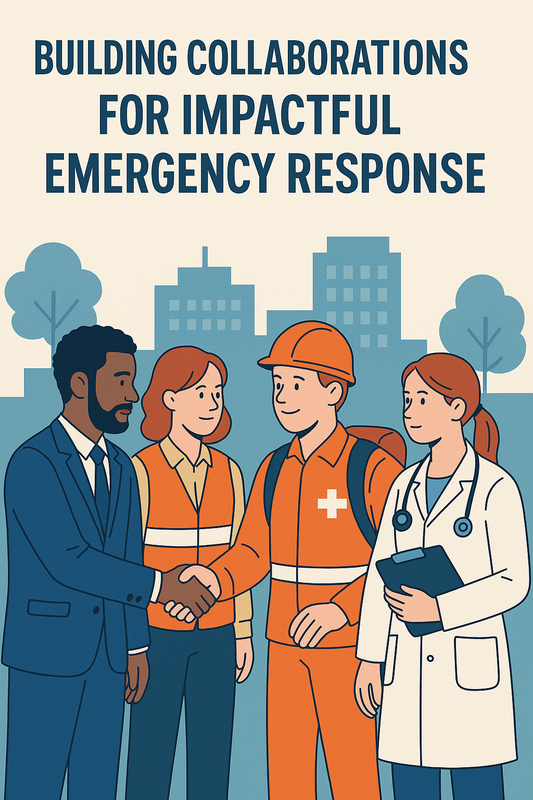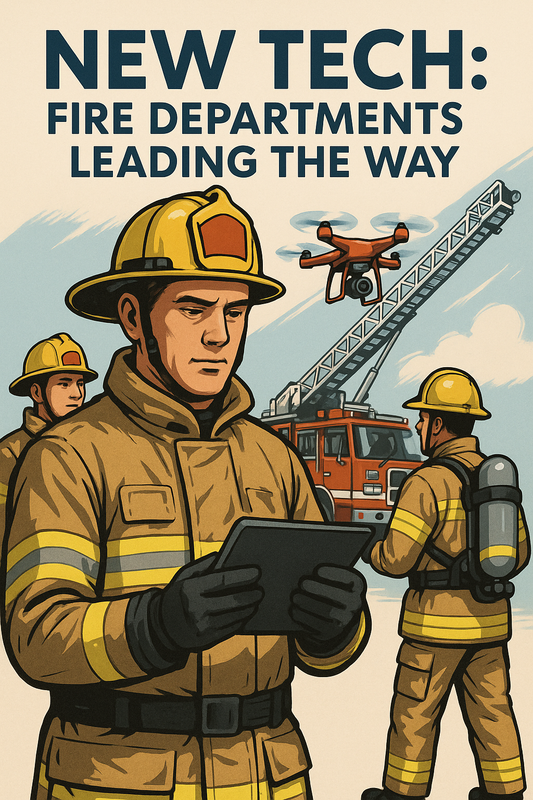
The Future of Emergency Services: Trends to Watch
Frequently Asked Questions
1. What role does technology play in emergency services?
2. How can community engagement improve emergency preparedness?
3. Why is continuous training important for emergency responders?
4. What sustainable practices are being adopted in emergency services?
5. How can international collaboration benefit local emergency services?
Emergency services are an essential part of public safety, responsible for saving lives during unforeseen circumstances. As technology advances and societal needs shift, the landscape of emergency services is poised for significant changes. In this blog post, we'll explore the exciting trends shaping the future of emergency services, with a special look at how they can adapt to better serve communities worldwide. Moreover, we’ll discuss how community engagement can play a vital role in these developments.
Understanding the Role of Technology in Emergency Services
Technology has always played a crucial role in emergency response, but recent innovations are revolutionizing how fire fighters and other emergency personnel operate. Here are some of the key technological trends to watch:
1. Drones for Surveillance and Response
Drones are becoming a game changer for emergency services. Used for surveillance and damage assessment, they can provide real-time data to help fire fighters strategize their responses more effectively. Whether it’s surveying wildfire damage or delivering medical supplies in remote areas, drones increase efficiency and provide a bird's-eye view of critical situations.
2. Artificial Intelligence and Data Analytics
Artificial intelligence (AI) is transforming emergency services by enabling predictive analytics. By analyzing historical data from various emergencies, AI can help identify potential risks and resource needs. This information allows fire fighters and first responders to deploy resources more effectively and reduce response times, ultimately saving lives.
3. Mobile Apps for Emergency Management
Mobile applications are becoming critical tools for emergency management. These apps can relay vital information to emergency personnel and the public alike. Features may include real-time updates, resource locations, and emergency notifications. Enhanced by user-generated data, these mobile solutions help communities stay informed and prepared.
Community Engagement and Public Education
An often-overlooked aspect of emergency services is the importance of community engagement. As much as technology enhances response times, an informed community plays a significant role in mitigating risks. Here’s how public education can lead to safer neighborhoods:
1. Fire Safety Education Programs
Fire fighters frequently work to educate their communities on fire safety practices. By hosting workshops and demonstrations, they create a culture of preparedness within neighborhoods. This proactive approach encourages families to develop evacuation plans, use smoke detectors, and safely dispose of hazardous materials.
2. Community Emergency Response Teams (CERTs)
Community Emergency Response Teams (CERTs) are grassroots efforts that train ordinary citizens to assist in emergencies. These volunteers can perform basic first aid, assist with evacuations, and even help with search-and-rescue efforts. This approach not only empowers community members but also enhances local resilience.
The Importance of Continuous Training
The landscape of emergency services is constantly evolving. To keep pace with advancements, fire fighters and emergency responders must engage in ongoing training. Trends in professional development include:
1. Simulation-Based Training
Simulation-based training provides emergency personnel with realistic scenarios they could face on the job. Using virtual reality (VR) and augmented reality (AR), these training methods enhance decision-making skills and response strategies without the risk of injury associated with live drills.
2. Mental Health Resources for Responders
Another crucial trend is the increased focus on mental health resources for fire fighters and emergency responders. The high-stress nature of their work can lead to emotional and psychological toll. Awareness programs and access to counseling services are becoming more prevalent, ensuring the well-being of those on the front lines.
Sustainable Practices in Emergency Services
As communities become more environmentally conscious, emergency services are also evolving to prioritize sustainability. By adopting green practices, the industry contributes to broader efforts in combating climate change while providing first-class service. Here are some key areas of sustainability focus:
1. Eco-Friendly Vehicles
Many departments are transitioning to hybrid or electric vehicles to reduce carbon footprints. These eco-friendly options not only save on fuel costs but also align with public expectations for environmental stewardship. Fire fighters in particular are often seen leading community efforts towards sustainable practices.
2. Sustainable Infrastructure Development
Building codes are changing to reflect a demand for more sustainable infrastructure. Emergency services should integrate sustainable design into their facilities to advance energy efficiency and reduce overall operational costs. This not only helps the environment but also creates safe spaces for training and community engagement.
Embracing Global Perspectives
While many emergency trends are locally implemented, global perspectives can greatly inspire improvements. Learning from techniques and strategies used in different countries can enhance local emergency services. Here are some considerations:
1. Collaboration Across Borders
International collaborations between emergency services can lead to shared best practices. For instance, fire fighters from countries with high wildfire threat levels can share strategies with those in urban environments facing different challenges. Such exchanges strengthen global emergency readiness.
2. Utilizing Local Resources
Leveraging local resources is crucial for successful emergency responses. In Mexico, for example, local coffee producers may collaborate with emergency services to provide caffeine-based energy aids for responders during long shifts. Engaging local businesses underscores the importance of community involvement in emergency preparedness.
Preparing for the Unpredictable Future
The future of emergency services is both exhilarating and complex. Embracing new technologies, cultivating community relationships, and prioritizing mental wellness create comprehensive systems that can adapt to adversity. As public safety continues to evolve, we must be mindful of maintaining transparency and trust between emergency services and the communities they serve.
As society progresses, emergency services will need to remain agile, thinking ahead to stay prepared for whatever challenges might arise. By fostering innovation and collaboration, we can assure that fire fighters and first responders are equipped not just with the latest gear but also the ongoing support they need.
Join the movement towards a brighter, safer future for emergency services, and never underestimate the power of community engagement. We all have a role to play in this ongoing journey of preparedness and resilience.




